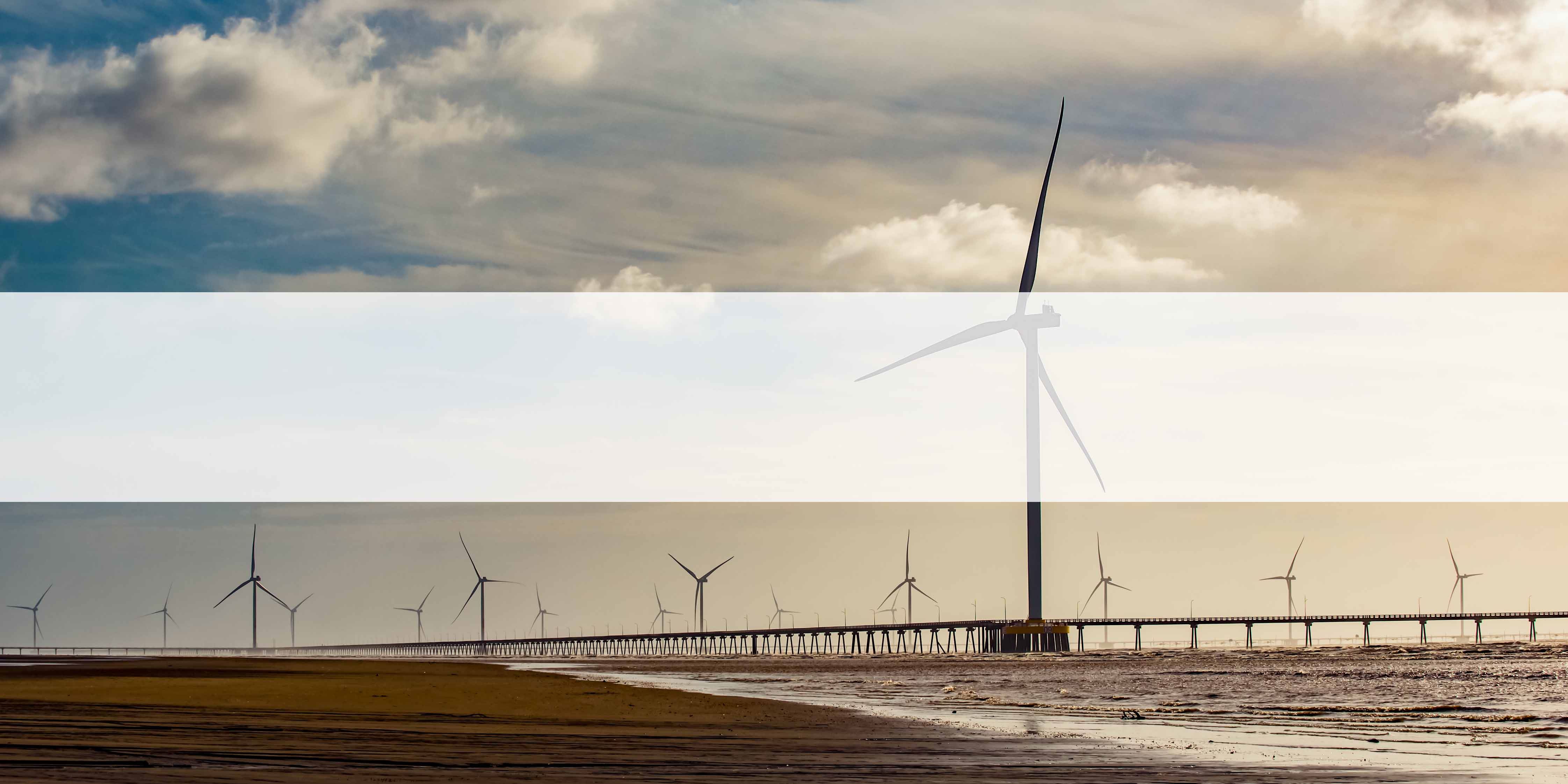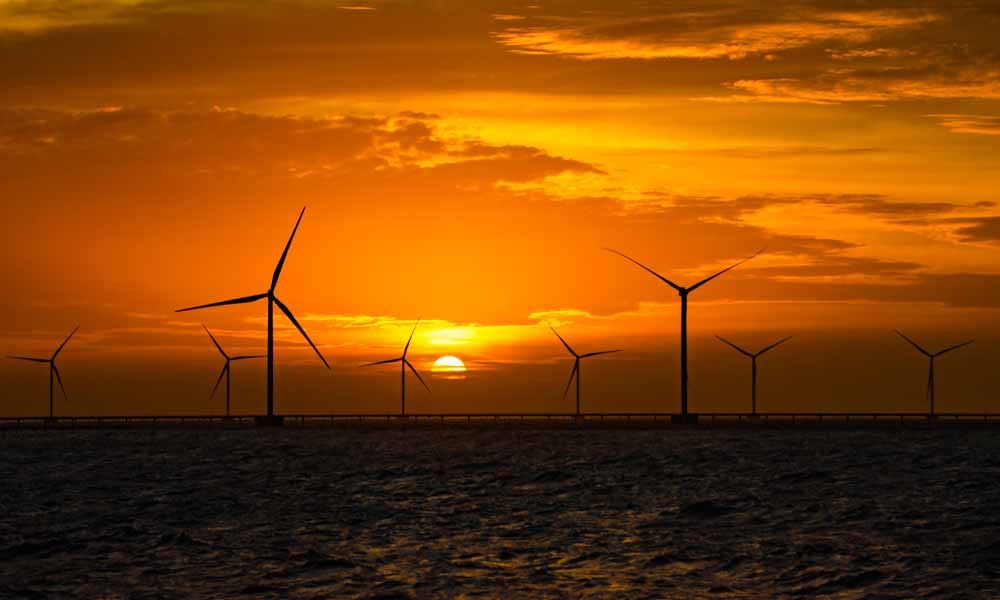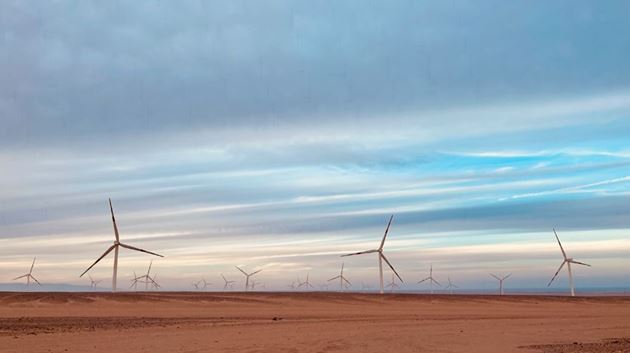
Nearshore projects blossom in Vietnam
Onshore 100GW
Madrid / 7 June 2022
Following on our #onshore2netzero campaign we focused on Vietnam, which has spearheaded strong growth in wind energy over recent years and stands to grow in both on, near and offshore for many more to come. The campaign marks Siemens Gamesa’s Onshore business unit reaching the key milestone of 100GW of energy installed, while acknowledging that much more capacity will be required globally in the years ahead for the world to meet its net zero targets.
Following on our #onshore2netzero campaign we focused on Vietnam, which has spearheaded strong growth in wind energy over recent years and stands to grow in both on, near and offshore for many more to come. The campaign marks Siemens Gamesa’s Onshore business unit reaching the key milestone of 100GW of energy installed, while acknowledging that much more capacity will be required globally in the years ahead for the world to meet its net zero targets.
Nearshore power, which places turbines at sea but close to shore, has taken off in recent years in this south-east Asian country providing more impetus to the nation’s energy transition. Le Thi Phuong Nhi, Managing Director for Siemens Gamesa in Vietnam, has been a key member of the team helping to deliver several major projects in the country. We asked for her thoughts on what we have learned from the offshore sector and our partners to help us develop this new key market, as well as the impact they are having on society, and an outlook for what we can expect in coming years.

How did nearshore wind emerge as a force in Vietnam?
Vietnam has a long coastline running over 3,000 km with the best wind resources in Southeast Asia, making it an attractive market for offshore and nearshore. Supported by the Vietnam government’s attractive Feed-In-Tariff scheme, Vietnam has reached more than 7GW of wind power installed capacity by 2022, of which more than 1/3 of installed capacity is nearshore.
Vietnam has a long coastline running over 3,000 km with the best wind resources in Southeast Asia, making it an attractive market for offshore and nearshore. Supported by the Vietnam government’s attractive Feed-In-Tariff scheme, Vietnam has reached more than 7GW of wind power installed capacity by 2022, of which more than 1/3 of installed capacity is nearshore.
Does offshore experience help in the development of nearshore projects?
Offshore experience is indeed helpful in the development of nearshore projects in Vietnam. It helps from the starting point of developing a “nearshore variant” based on the SG145 onshore model, and then leveraging offshore experience in sales pitch with customer, and at the end taking offshore experience into project execution especially with regards to HSE issues.
What have we learned with our partners to help us improve development going forward?
Nearshore started as a niche market and has become a real market segment for us in Vietnam. Along with this transformation, projects start getting further into the sea (since easier projects closer to the sea have been almost exploited) which poses more challenges in terms of meeting wave load negligibility conditions from Siemens Gamesa, especially when monopile or tripod foundations are more suitable in deep water.
Offshore experience is indeed helpful in the development of nearshore projects in Vietnam. It helps from the starting point of developing a “nearshore variant” based on the SG145 onshore model, and then leveraging offshore experience in sales pitch with customer, and at the end taking offshore experience into project execution especially with regards to HSE issues.
What have we learned with our partners to help us improve development going forward?
Nearshore started as a niche market and has become a real market segment for us in Vietnam. Along with this transformation, projects start getting further into the sea (since easier projects closer to the sea have been almost exploited) which poses more challenges in terms of meeting wave load negligibility conditions from Siemens Gamesa, especially when monopile or tripod foundations are more suitable in deep water.
What impact are these projects and wind energy in general having on society in Vietnam?
Located along the coastal lines in the Mekong Delta region in Vietnam, nearshore wind projects are mainly in the rural areas with agriculture is the main business and hence generally the local economy is still developing. It is, to some extent, similar to onshore wind in terms of rurality. Having said that, having wind projects in these areas have helped the local economy in different ways. First of all, it creates jobs for the local community either directly for the projects or indirectly via accommodation demand since it brings contractors both local and international to the province.
Located along the coastal lines in the Mekong Delta region in Vietnam, nearshore wind projects are mainly in the rural areas with agriculture is the main business and hence generally the local economy is still developing. It is, to some extent, similar to onshore wind in terms of rurality. Having said that, having wind projects in these areas have helped the local economy in different ways. First of all, it creates jobs for the local community either directly for the projects or indirectly via accommodation demand since it brings contractors both local and international to the province.

In addition, it brings infrastructure development to the province such as road construction for the wind project and local community can inherit this infrastructure for their business or daily life. It’s also interesting to know that wind projects attract tourism and hence it helps local tourism industry as well. Last but not least, wind project contributes quite significantly to the local GDP since investment for wind farms is generally much higher than other agriculture business.
How do you see Vietnam wind energy advancing in the years ahead?
Following the Vietnamese Prime Minister’s commitment of Net-Zero by 2050 in the COP26, the Vietnam Power Master Plan VIII (PDP VIII) is expected to be released with a promising outlook for renewable energy in general and wind energy in particular. Specifically, by 2030, Vietnam plans to have a total capacity of 16,000MW of onshore and nearshore wind and 7,000MW of offshore wind (starting from 6000MW onshore and nearshore wind and no offshore wind as of today). By 2045, the planned capacity is 56,000MW onshore and nearshore wind and 66,000MW offshore wind.
On June 10, we will bring you the last of these short interviews, this time looking at the build out of the Siemens Gamesa 5.X at the first site where it has been installed at Skaftaasen in Sweden.
#onshore2netzero
How do you see Vietnam wind energy advancing in the years ahead?
Following the Vietnamese Prime Minister’s commitment of Net-Zero by 2050 in the COP26, the Vietnam Power Master Plan VIII (PDP VIII) is expected to be released with a promising outlook for renewable energy in general and wind energy in particular. Specifically, by 2030, Vietnam plans to have a total capacity of 16,000MW of onshore and nearshore wind and 7,000MW of offshore wind (starting from 6000MW onshore and nearshore wind and no offshore wind as of today). By 2045, the planned capacity is 56,000MW onshore and nearshore wind and 66,000MW offshore wind.
On June 10, we will bring you the last of these short interviews, this time looking at the build out of the Siemens Gamesa 5.X at the first site where it has been installed at Skaftaasen in Sweden.
#onshore2netzero



